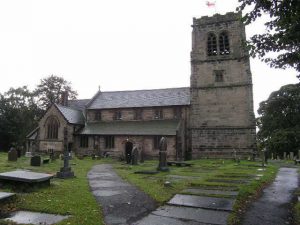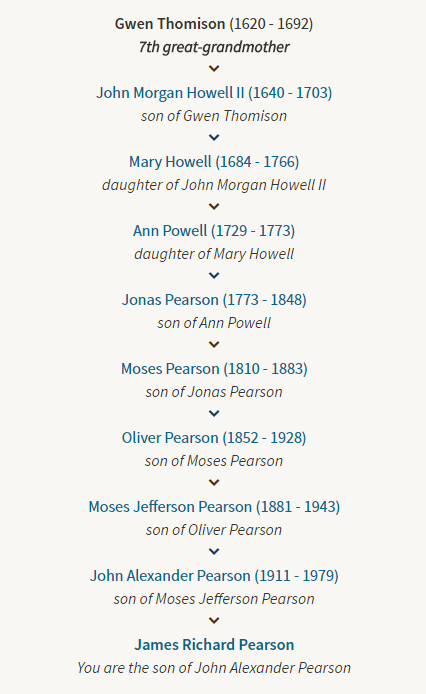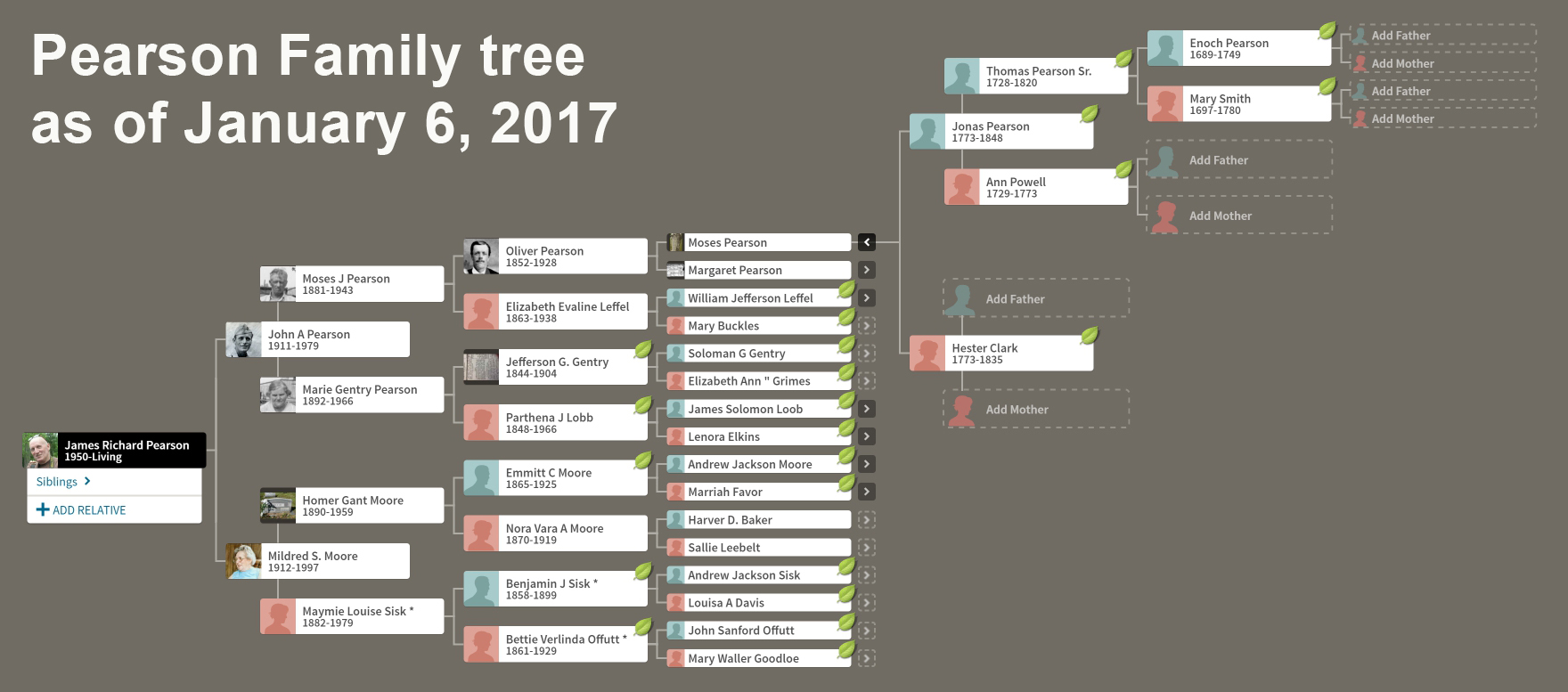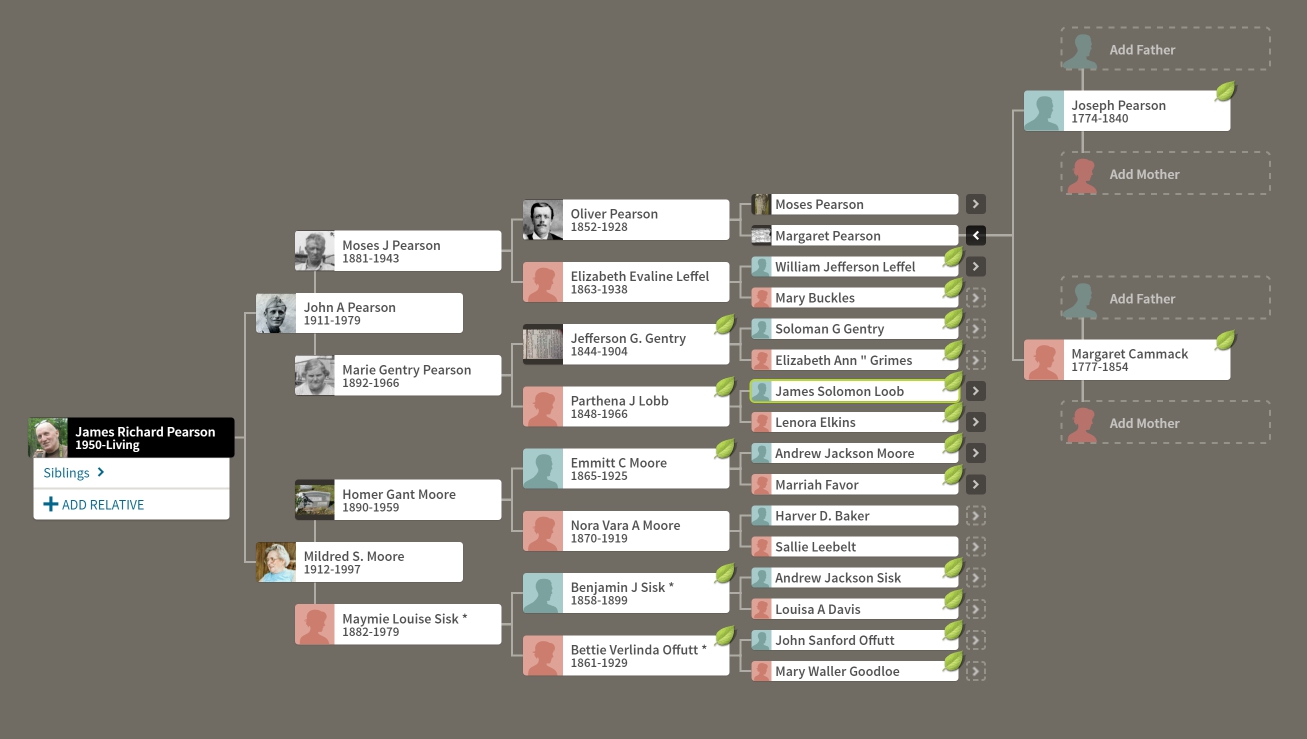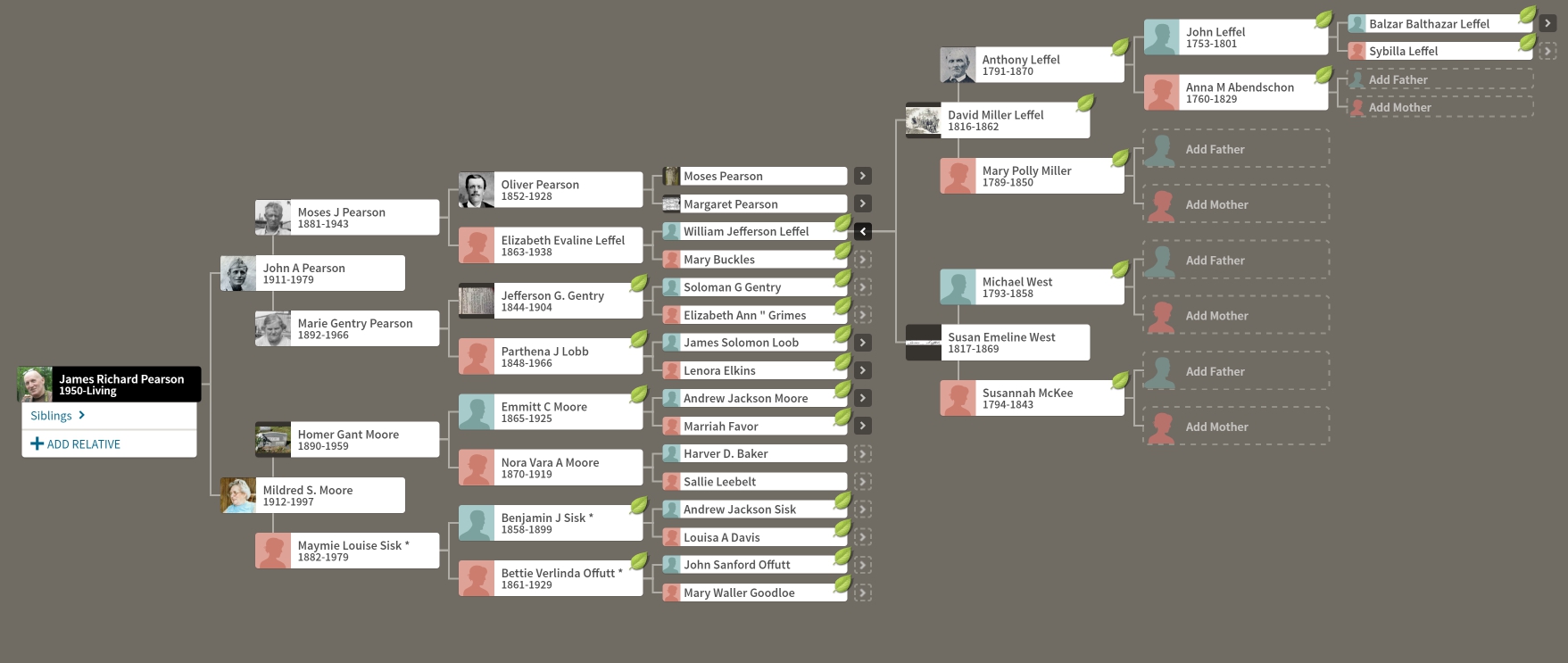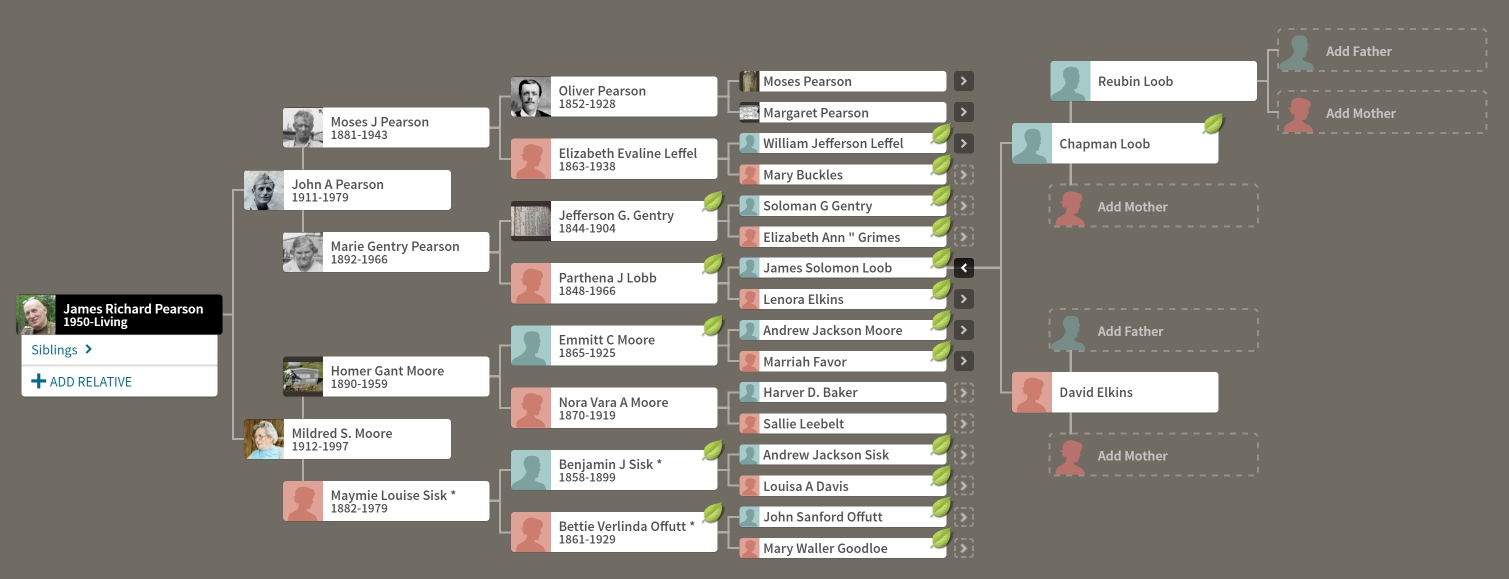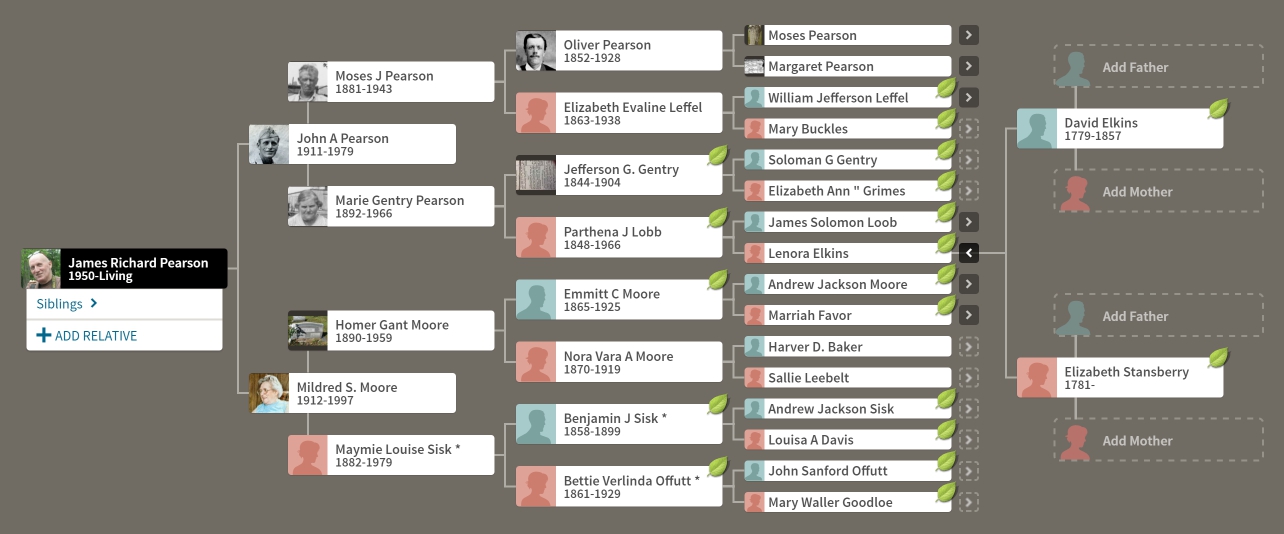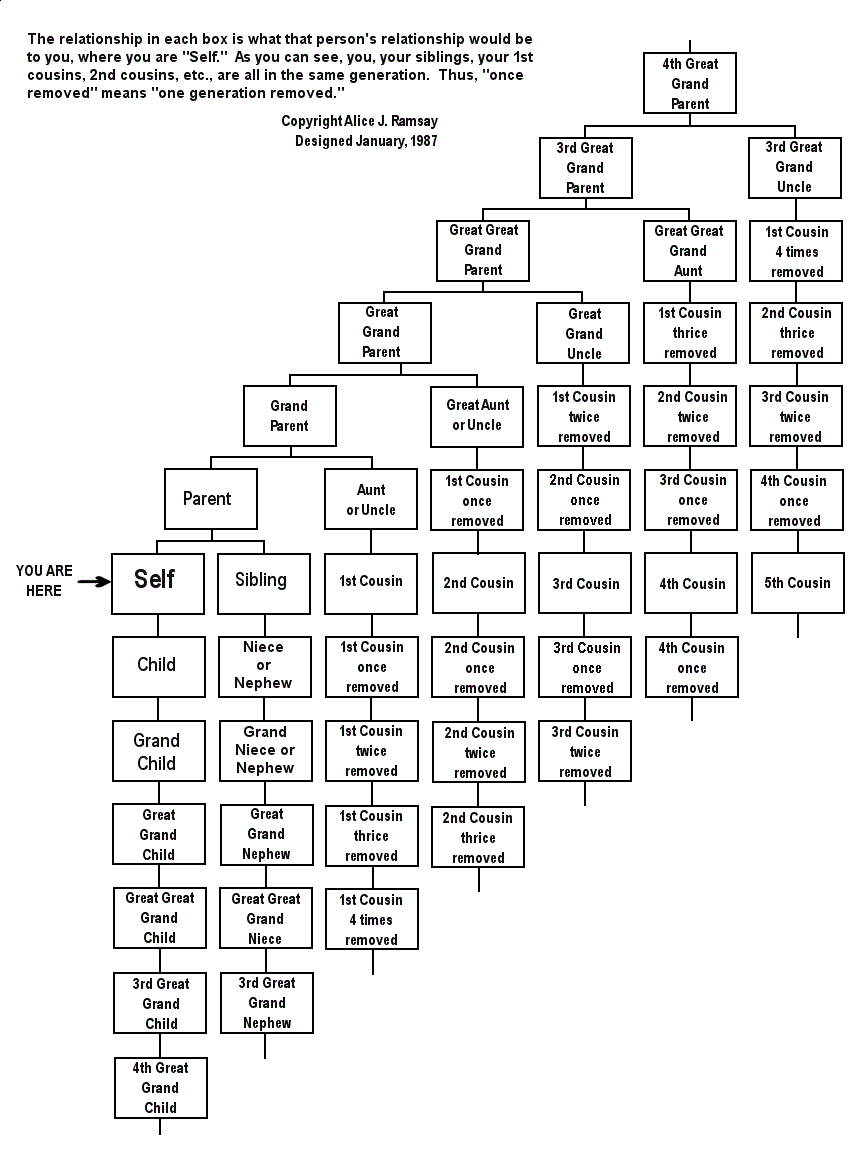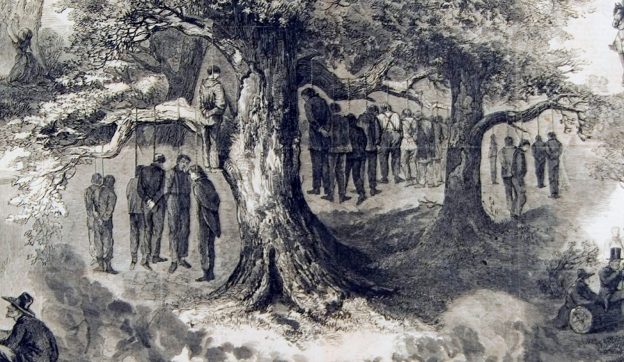Thomas Pearson Sr.
Birth 24 March 1728 • Philadelphia, PA, USA
Death 13 October 1820 • Monroe Township, Miami, Ohio
Our 4th great-grandfather on Moses J. Pearson’s side of the family
“The first I’ll mention is Thomas Pearson, ‘Little Old Tommy,’ who lived to the greatest age of any who came from Newberry, besides being the oldest emigrant to his township and as near as I can learn, county.
Born in 1728, he was older that the Father of his Country, a fact which seemed to attach additional importance to him. In early life, he lived in Philadelphia, following the trade of saddler & harness-maker. Years before, & during the Revolution, he & his family resided in Newberry District & had their full share of its honors.
Once, when a captive, his enemies required his service in saddlery and harness work, regardless of his lack of tools. He answered them by saying that ‘Neither wise men nor fools can work without tools,’ the piquancy of which caused them to laugh & excuse him.
He appears to have occupied the first seat in the ‘Common Meetings’ of Friends.
A granddaughter of his told me that once during the solemn quiet of a meeting a partially insane woman came in with fruit in her apron and going up to him said, ‘Here, Mr. Pearson, I’ll give you the apples if you will preach today.’ Being a harmless person they got rid of her in a quiet way; but whether they regarded her interruption as a rebuke upon their silent worship I was not informed.
I think it was in 1805 or 1806, that Father Pearson left Newberry with a numerous retinue of children, grandchildren and one great-grandchild. Coming directly to Miami County they pitched their tents in proximity to the Jays & Jenkinses, who had preceded them.
It was not many years before his many descendants were settled comfortably around him and he saw teeming fields, in place of dark, tangled forest. His wife died and though in advanced age, he took another.
A few years more and his walk became tremulous, his eyes grew dim and his hearing blunted. The writer saw him in 1820, when he had Old Dodson’s Three Warnings: – ‘he was lame, deaf and blind. ‘He could walk only with support on both sides, could hear only by loud speaking in his ear, both day and night were alike to him. Upon asking what time it was, if answered ten o’clock, he would say and repeat, ‘Ten o’clock, ten o’clock.’ striving, but in vain, to impress it upon his memory, for it would not be long before he repeated the question.
A short time after the above-described sight of Old Thomas, the author heard a grandson of his announce his death & burial…”
From: Annals of Newberry, John O’Neall & John A. Chapman, Aull & Houseal, Newberry, SC, 1892, pp.332-333

